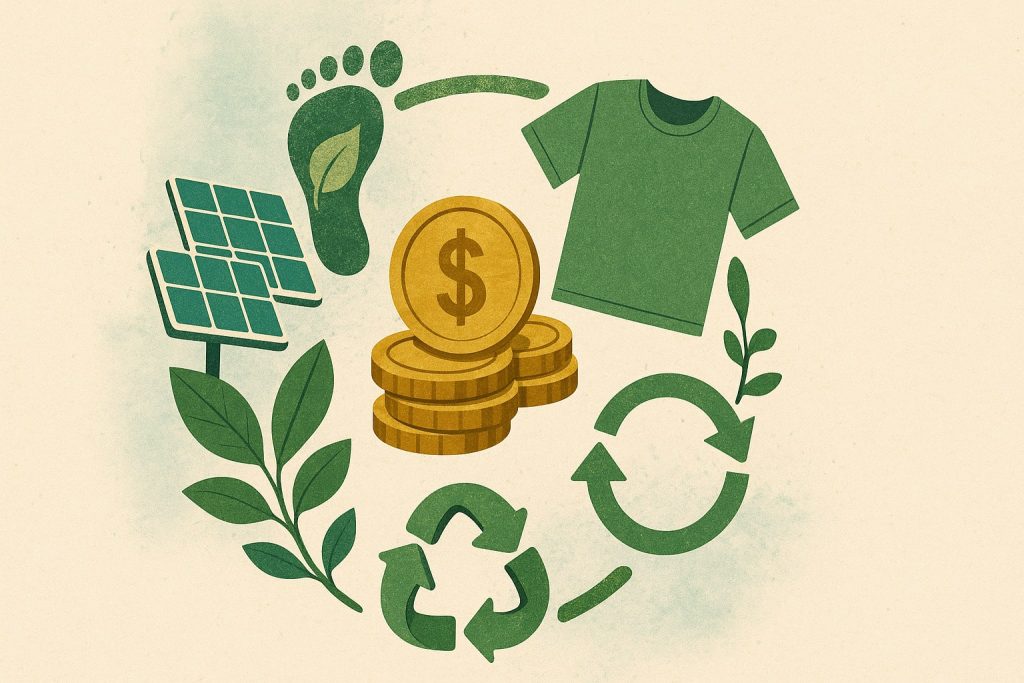The circular economy is gradually transforming not just how we perceive waste and resources, but also our financial behaviors. In essence, this economic model seeks to minimize waste and make the most of resources. By closing the loop of product lifecycles, it aims to keep materials in use for as long as possible.
This shift in resource management is influencing American spending habits and investment strategies. It encourages individuals and businesses to rethink their priorities and explore sustainable practices that align with a more environmentally friendly economy.
Rethinking consumption in a sustainable economy

The rise of the circular economy is prompting a reevaluation of consumption patterns. Consumers are now more mindful of the environmental impact of their purchasing choices, leading to a surge in the popularity of second-hand markets and rental services.
This trend not only conserves resources but also saves money, as buying pre-owned or renting often comes at a lower cost than purchasing new. By prioritizing quality over quantity, Americans are embracing a mindset that values longevity and resourcefulness, promoting a healthier planet and a more robust economy.
In addition to changing purchasing behaviors, there is a growing interest in sustainable investments. Individuals are seeking out financial opportunities that align with their values, supporting companies focused on reducing waste and enhancing resource efficiency.
This shift is not solely driven by environmental concerns but also by the understanding that sustainable businesses often present lower risks and foster long-term growth. As investors redirect their capital towards circular ventures, they fuel the growth of an economy that values regeneration over exploitation.
American finance in a circular context
The influence of circular principles is reshaping the financial landscape in the United States. More investors are considering the environmental, social, and governance (ESG) factors when making decisions. This shift encourages financial institutions to develop products and services that support sustainability and resource efficiency.
Banks and investment firms are exploring new avenues to integrate these principles into their offerings, recognizing the growing demand for ethical and responsible investment options. The cycle of money thus mirrors the cycle of materials, emphasizing conservation and mindful use.
Furthermore, government policies are increasingly supporting this economic transition. Tax incentives and subsidies for businesses that incorporate circular practices are becoming more prevalent, encouraging more companies to adopt sustainable models.
These initiatives not only support environmental goals but drive economic resilience, stimulating innovation and job creation in emerging green sectors. By nurturing an ecosystem that rewards circular practices, policymakers are paving the way for a more just and equitable economic future.
Practical steps for individuals and businesses
Adopting circular principles can be both rewarding and impactful. For individuals, this means making educated choices about what to buy, prioritizing durable and repairable products. Educating oneself about the products’ life cycles and opting for sustainable options when possible can have significant environmental benefits.
Businesses are also encouraged to innovate in line with the circular model. This involves reimagining product design to be modular and longer-lasting, investing in technologies that enable closed-loop systems, and actively participating in recycling programs.
By fundamentally rethinking their operations, companies not only reduce waste but also drive new growth and competitive advantages. They engage customers on a deeper level by aligning with the growing preference for sustainability, fostering brand loyalty and opening up new revenue streams.
Moving forward with circular ideals
Embracing the circular economy presents an opportunity to redefine prosperity in the United States. As more individuals recognize the environmental and financial benefits of this model, a collective movement towards sustainable living and investing is gaining traction.
Ultimately, the transition towards a circular economy requires collaboration between consumers, businesses, and governments. By embracing these principles, the United States can lead the way in crafting a future where economic activities replenish, rather than deplete, the earth’s resources.
